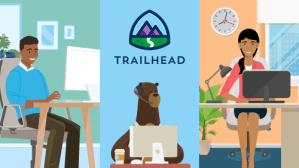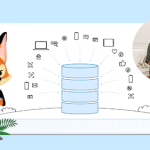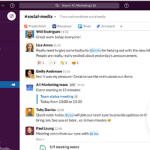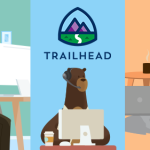A Pew Research article cited over 1/3rd of respondents claiming low pay (63%), no opportunities for advancement (63%) and feeling disrespected at work (57%) as key reasons for quitting in 2021. The “Great Resignation” was not merely a knee-jerk reaction to stress or the Covid- 19 pandemic. It was brewing for quite some time, and now it has prompted organisations and HR leaders into formalising a long-term strategy for employee retention.
One way of improving employee retention and productivity is by building a workplace culture that offers upskilling and reskilling opportunities. The World Economic Forum recently emphasised the importance of upskilling for shared prosperity, calling upon businesses to launch an ‘upskilling revolution’ that enables workers everywhere to fully immerse themselves in the future of work.
Upskilling and reskilling opportunities boost employee engagement and satisfaction by eliminating the feeling of stagnation. Continuous learning, in the form of training and development programs, helps enhance staff morale and happiness, and infuses a sense of responsibility and belonging. Well thought-out career progression backed by supportive learning opportunities makes your employees feel better prepared to handle present duties and assures them that they are picking up new skills to adapt to any new changes in their industry.
The outcome? Engaged and motivated employees who have a strong bond with their organisation, leading to higher employee retention and more quality work.
Building employee skill sets: a win-win for employees and organisations
On-the-job learning contributes significantly to employees’ skill sets and aids in career progression. In fact, such human capital drives 2/3rd of an average employee’s wealth, according to a McKinsey report. It is even higher in the case of India – skills developed on the job contribute 56% of average lifetime earnings, besides contributing to a learning and nurturing ecosystem that drives employee retention.
For organisations, providing upskilling opportunities to employees helps bridge the fast-widening skills gap. A Gartner study shows that a majority of HR Leaders feel that almost 58% of the global workforce needs new skills to succeed at their existing jobs. Upskilling improves workforce capabilities, enabling better productivity and faster organisational growth.
So how can organisations foster a learning environment that drives employee retention? Here are some quick tips to get started.
1. Democratise Learning: Conduct scheduled training for all departments
Don’t limit training to core teams, but offer access to structured training programs to employees across functions. This way, you can ensure that every employee keen to develop capabilities for on-demand skills is getting a fair chance at it. This affords them opportunities for horizontal movement, encouraging them to stay within the same organisation.
In the near to mid-term, it can help you discover and build talent that is future-ready, source for new roles from within the existing talent pool, and accelerate your business goals.
For example, an accounting professional may be keen to build low-code development skills. This could be of value to your organisation in more ways than one – the employee could build solutions that transform your financial operations or move to another function to develop a platform for smarter sales.
2. Acknowledge different learning preferences while creating learning opportunities
For some employees, a typical classroom setting with a teacher may be the best way to learn. Others might prefer taking after-work online classes. Some others might choose microlearning, which involves watching 15-minute videos that briefly cover a single subject. Organisations must take all these different learning styles into consideration and offer training options and programs for all preferences, so employees can learn in a manner that suits them.
3. Outsource employee skill development to professionals
If you are unsure about the nature of skilling programs that your employees will value, hire the services of a professional. You will find that they are able to build a high-energy learning environment for your organisation and employees. This approach is also helpful in the reverse scenario; suppose you are looking to build an in-house team for a new function and want employees to develop the related skills. Bringing in external professionals, who are up to date on advanced training techniques, will help create curiosity about the sessions and prompt more sign-ups.
4. Celebrate your employees’ learning achievements
Celebrating your employees’ success at a particular skill set is a sure-shot way to acknowledge their capabilities – and inspire other learners. Often, employees quit because they feel their current organisation does not value their skills. Managers can use financial incentives, words of praise and team-wide shoutouts to spotlight skill-based achievements of employees.
Gamification has emerged as a great way to make learning interesting, by providing quick feedback and incentivising players. Creating an environment where employees can discuss their learning programs, record their achievements and be rewarded for their progress can help keep them invested in their learning.
Learning platforms like Trailhead, for instance, allow companies to combine the challenge and excitement of learning new skills with the opportunity to offer rewards like community badges, gift cards, vouchers and so on.
5. Let employees use their new skills
Even a well-conducted training session can go to waste if the employees don’t get a chance to apply their varied skills to increase business value.
Salesforce, for instance, encourages stretch projects, where employees are encouraged to pair up with mentors around the world to learn new skills and get opportunities to work on functional areas that are different from their regular responsibilities.
Enable seamless upskilling with Salesforce
A trained and skilled workforce is the biggest asset for any organisation. With a continuous learning and challenging environment, your organisation can improve employee retention rate and productivity. By providing sufficient opportunities, you can create a strong workforce that is ready to step up to bigger roles instead of investing in new hiring which is both costly and time consuming.
Salesforce Trailhead provides the right tools to help drive learning anytime, from anywhere. Intended for people with different backgrounds and interests, Trailhead is a fun way to learn the Salesforce, digital and soft skills your employees need to excel in a competitive environment. It can help skill up your employees at every stage of digital transformation in your organisation. The anytime, anywhere learning helps them stay invested, both in their own professional growth as well as the growth of your organisation.




























